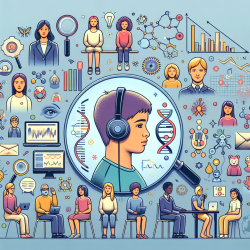Introduction
In the realm of pediatric speech-language pathology, understanding the nuances of rare diseases can significantly enhance therapeutic outcomes. The recent study, "Precision Information Extraction for Rare Disease Epidemiology at Scale," provides groundbreaking insights into the epidemiology of rare diseases, which can be pivotal for practitioners in this field. This blog delves into how these insights can be harnessed to improve therapy services, particularly for children.
Understanding Rare Disease Epidemiology
The study introduces an innovative approach to extracting epidemiological information about rare diseases using a deep learning framework. This method, known as EpiPipeline4RD, leverages Named Entity Recognition (NER) and a deep learning model adapted from BioBERT to extract epidemiological data with high precision. The results, with F1 scores of 0.817 and 0.878 at the entity-level and token-level respectively, demonstrate the model's effectiveness in identifying epidemiological information from rare disease literature.
Implications for Speech-Language Pathologists
For speech-language pathologists, particularly those working with children, understanding the epidemiology of rare diseases is crucial. Many rare diseases have associated speech and language disorders, and having precise epidemiological data can aid in early identification and intervention. Here’s how practitioners can benefit:
- Targeted Interventions: By understanding the prevalence and incidence of rare diseases, therapists can tailor interventions to address specific needs associated with these conditions.
- Resource Allocation: Data-driven insights allow for better resource allocation, ensuring that therapeutic efforts are focused on areas with the greatest need.
- Collaborative Care: Knowledge of rare disease epidemiology can enhance collaboration with other healthcare providers, leading to comprehensive care plans for affected children.
Encouraging Further Research
While the study provides a robust framework for extracting epidemiological data, there is ample opportunity for further research. Speech-language pathologists are encouraged to engage with this data to explore correlations between rare diseases and speech-language disorders. Such research could lead to the development of new therapeutic techniques and interventions.
Conclusion
Incorporating data-driven insights from rare disease epidemiology into speech-language pathology can significantly enhance therapeutic outcomes for children. By leveraging the findings from the study, practitioners can develop more effective, targeted interventions, ultimately improving the quality of life for children with rare diseases. To delve deeper into the study, you can access the original research paper, Precision information extraction for rare disease epidemiology at scale.










